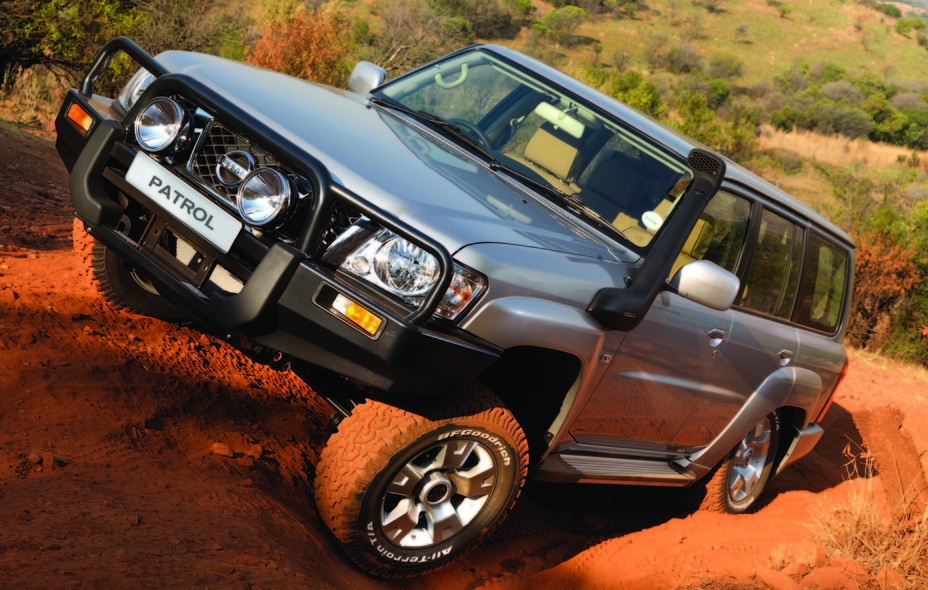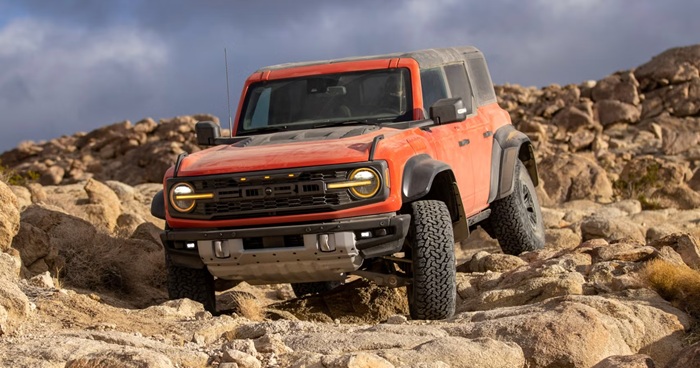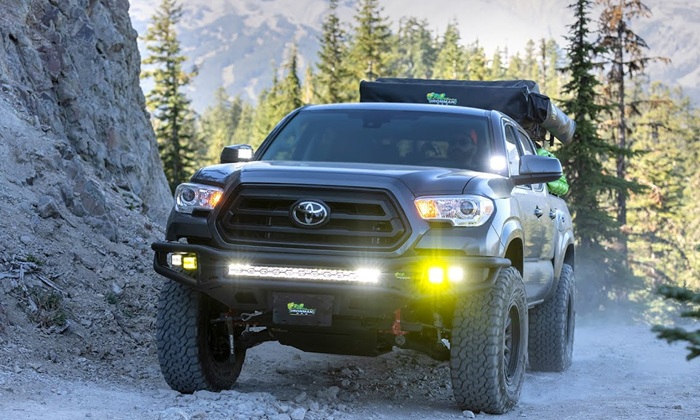
When I first learned about double wishbone suspension, I was fascinated by how cleverly it balances stability and handling.
It’s the kind of engineering you’d expect in performance cars and premium vehicles, where every detail matters for driving feel.
But as impressive as it sounds on paper, the reality is that this system comes with its own set of headaches. From higher costs to tricky maintenance and even space issues, the double wishbone isn’t always the perfect solution.
In fact, that’s why many manufacturers stick with simpler setups like the MacPherson strut.
In this article, I’ll walk you through the key disadvantages of double wishbone suspension—so you can see the other side of the story behind this much-praised design.
What is a Double Wishbone Suspension?
The double wishbone suspension, also known as an A-arm suspension, is a type of independent design commonly found in performance and luxury vehicles.
It uses two control arms—an upper and a lower—shaped like a wishbone or the letter “A.” These arms connect the wheel hub to the chassis, allowing each wheel to move on its own for better ride comfort and stability.
What makes this setup special is the precise control it gives over camber, caster, and toe angles, which directly influence grip and handling.
That’s why it’s often preferred in sports and high-end cars where driving dynamics matter most. But how does it actually work…
Upper and Lower Arms – The wheel hub (or steering knuckle) is linked to two wishbone-shaped arms. They pivot at the chassis, letting the wheel move up and down over uneven surfaces.
Spring and Damper – Mounted between the lower arm and chassis, they absorb shocks and keep the ride smooth.
Ball Joints – Flexible joints that let the wheel move vertically while still steering left or right.
Independent Action – Since each wheel has its own suspension arms, bumps on one side don’t directly affect the other, improving stability and cornering confidence.
In essence: the double wishbone helps maintain maximum tire contact with the road, reduces body roll, and delivers sharper handling compared to simpler systems.

Disadvantages of Double Wishbone Suspension
From the outside, the double wishbone might look like the “dream setup”—precise handling, great wheel control, and strong road manners.
But if you’ve wrenched on trucks or pushed them hard under load, you know the story isn’t all good.
Here are the main drawbacks I’ve noticed (and had to deal with myself):
1. Maintenance Complexity and Cost
Unlike a solid axle or even a MacPherson strut, the double wishbone isn’t simple.
You’ve got upper and lower arms, ball joints, bushings, and linkages—every one of those is a potential wear point. On trucks that haul heavy, tow trailers, or spend time off-road, those stress points wear faster.
When something does fail, it’s rarely a quick swap. Labor costs are higher because mechanics have to be precise with alignment and geometry, and parts themselves aren’t cheap either.
Basically, the very accuracy that makes the double wishbone ride so well is also what makes it expensive to keep in top shape.
2. Torque Management Issues
Throw on a heavy load, hit the brakes hard, or lay down torque through bigger tires, and you’ll see one of the weak spots.
The lower control arm ends up carrying a lot of stress. Engineers often deal with this by making the lower arm longer or beefier, but that pushes the design toward multi-link suspension territory.
The more parts you add, the heavier and more complex it gets—taking away from the original “clean” wishbone concept.
3. Space and Packaging Limitations
On paper, double wishbones give engineers great control over wheel movement. In reality, they eat up a lot of space inside the wheel well.
On trucks, that space is premium—you want clearance for bigger tires, heavy-duty brakes, or steering components.
Double wishbones can restrict how much articulation you can get, especially if you’re trying to lift the truck or fit oversized tires.
4. Higher Unsprung Weight
Since both upper and lower arms are usually pretty robust on a truck, the suspension can add a fair bit of unsprung weight.
More unsprung weight means the wheels don’t react as quickly to bumps, which can hurt ride comfort on rough terrain.
It’s a trade-off: great control on smooth roads, but not always the best feel when the surface gets nasty.
5. Alignment Sensitivity
Trucks that run double wishbones are notoriously picky about alignment.
Camber and caster are more adjustable compared to simpler setups, but that also means they go out of spec more easily when bushings wear or after hard use.
For folks who lift or modify their trucks, keeping the geometry dialed in becomes a constant battle.

Why Double Wishbone Suspension Works Well for Off-Road Vehicles?
If you’ve spent time driving trucks or SUVs off-road, you know that the right suspension can make or break the experience.
I’ve always been impressed by how double wishbone setups handle tough terrain. It isn’t common in everyday commuter cars because of its complexity and cost, but it shows up where performance, handling, and durability matter most.
Sports cars like the Honda NSX, Mazda MX-5 (early models), and many Ferraris and Lamborghinis rely on it for sharp cornering and precise wheel control.
Luxury sedans such as the Mercedes-Benz S-Class, Lexus LS, and Jaguar XJ also use it to balance comfort with stability.
In the truck and SUV world, front double wishbones are popular for off-road capability and load handling. Models like the Toyota Land Cruiser, Nissan Patrol, Ford F-150, and Toyota Tacoma use this setup to combine rugged durability with improved ride quality.
Even in motorsport—especially Formula 1—advanced double wishbone designs dominate because of their ability to fine-tune suspension geometry for maximum grip.
Yes, they’re complex, but here’s why they’re worth it:
1- Independent Wheel Movement
Each wheel moves on its own. When one tire hits a rock, rut, or pothole, the others stay planted.
This provides better traction and control, keeping the vehicle moving smoothly over rough surfaces.
2- Superior Camber Control
Double wishbones let engineers fine-tune camber angles.
On uneven trails, this keeps the tires flatter against the ground, maximizing grip where it’s needed most.
3- Smooth Ride Over Rough Terrain
Bumps and ruts feel less harsh. The design allows for longer suspension travel, absorbing shocks effectively and making off-road driving more comfortable.
4- Reduced Body Roll
Even on steep slopes or during sharp turns, the vehicle feels more stable. Trucks with this setup stay planted, which is reassuring when carrying heavy loads or towing.
5- Better Handling Under Load
The precise control over wheel angles keeps handling predictable, even when the truck is fully loaded—critical when tackling challenging terrain.
6- Space for Larger Tires
The suspension provides room for bigger wheels without limiting travel. That extra clearance and traction helps navigate rocks, mud, or sand with confidence.
7- Tunable and Adaptable
Ride height, damping, and spring rates can be adjusted more easily than in simpler setups.
This flexibility lets drivers optimize the balance between comfort, grip, and handling for off-road adventures.

Is Upgrading to a Double Wishbone Suspension System Good for My Vehicle?
I get this question a lot from truck owners who want better performance, both on and off the road.
On paper, double wishbone suspension sounds like the ultimate upgrade—independent wheel movement, solid camber control, and the ability to handle uneven terrain.
But before making the switch, there are a few things worth thinking through.
First, consider the terrain you usually drive on. If your truck spends most of its time on highways with the occasional dirt road, you may not see the full benefit of such a complex system.
But if you’re constantly pushing through rough trails, hauling on uneven ground, or driving in off-road conditions, double wishbones can make a huge difference in ride quality and control.
Vehicle weight is another factor. This suspension really shines on larger, heavier platforms where strength and load capacity matter.
On half-ton or heavy-duty trucks, the ability to maintain proper wheel alignment under stress pays off.
But trying to retrofit a smaller, lighter vehicle can be more hassle than it’s worth—geometry, space, and cost quickly become limiting factors.
Now, about upgrades: while many see the double wishbone as the “holy grail” of suspension systems, it’s not the only path to better performance.
Aftermarket coilovers, reinforced control arms, or long-travel kits for existing suspensions can also deliver serious gains without a full redesign.
And here’s the reality—if your truck didn’t come with double wishbones from the factory, retrofitting is no easy task. It often means cutting, welding, and re-engineering major components, which isn’t practical for most drivers.
That said, if you’re chasing maximum performance, regularly drive in rough conditions, and your truck is built to handle the weight, a double wishbone setup can be a game-changer.
It’s not just about smoother rides—it’s about better load handling, improved traction, and more predictable behavior when the terrain gets nasty.
My final take is that if you’ve got a heavy-duty rig and demand off-road capability and control, the double wishbone is worth it.
But if your truck sees more pavement than dirt, or if you’re just after a mild upgrade, stick with targeted aftermarket mods—you’ll save money and still get the performance you need.
The conclusion
Double wishbones are common in performance cars, luxury sedans, and off-road trucks/SUVs—anywhere engineers want the perfect mix of comfort, control, and durability.
But here’s the catch: once you start stretching or reinforcing components to deal with those loads, you’re drifting into multi-link territory.
That defeats part of the “clean” design advantage of the double wishbone. In practice, this can mean added weight, complexity, and even more components to maintain.
In the real world (especially for working trucks), it can be a headache. More parts, more costs, more space taken up. That’s why you’ll still see plenty of manufacturers stick with solid axles or simpler designs for durability and ease of service.
